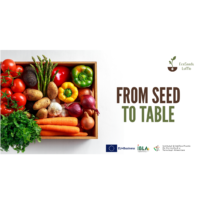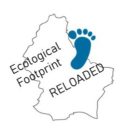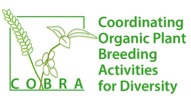finished projects
gypsum-lime power
As this is a demonstration trial, a further objective is the communication of the results as well as the exchange within the network of consultants, scientists and practitioners.
luxembourg in transition
Spatial vision for the zero-carbon and resilient future of the Luxembourg functional region
Spatial vision for the zero-carbon and resilient future of the Luxembourg functional region
In the "Luxembourg in Transition" competition launched by the Spatial Planning Department of the Ministry of Energy and Spatial Planning, we developed together with LIST, the University of Luxembourg, the Center for Ecological Learning Luxembourg (CELL) and OLM paysagistes & urbanistes, how Luxembourg has to change spatially by 2050 in order to become climate-neutral, sustainable and resilient.
Not only aspects of spatial planning, mobility or the modeling of greenhouse gas emissions, but also the way of life of the Luxembourgers, their diet and their consumption, as well as questions of governance are part of the dossiers submitted. Of course, agriculture also plays an important role in these considerations. IBLA supports the elaboration of how Luxembourg´s agriculture could develop spatially and in terms of farm management in order to achieve a sustainable, resilient and less CO2-intensive system. In three competition phases, a metric is developed in the first phase, which serves as the basis for evaluating the change. In the second phase, the necessary transformation steps for the CO2-free and sustainable future are worked out on the scale of the cross-border functional region, whereas in the third phase the remaining project teams show the transformation, the necessary steps towards the zero carbon and resilient future using different case studies.
© The pictures are part of the report “LUXEMBOURG 2050: PROSPECTS FOR A REGENERATIVE CITY-LANDSCAPE”, Phase II: https://luxembourgintransition.lu/en/teams/
ecoseeds_lumo

With the EcoSeeds_LuMo project, IBLA and IP IPHTA want to create a network to improve organic food production in both countries and raise its competitiveness. The aim of the project is to support Moldovan farmers and agricultural organizations in the field of organic seed production, labeling as part of the quality process and certification of organically produced seeds, and to encourage Moldovan farmers to grow organic seed material for potatoes and other basic vegetables. The Luxembourgish farmers and consultants, on the other hand, benefit from the experience of the companies in Moldova with cultivation under difficult climatic conditions.
The first project phase started with the kick-off meeting, in which the project participants made initial contacts. On December 6th, 2021, a joint online workshop was held by Moldovan farmers, researchers and officials as well as Luxembourgish local actors in the organic production on the subject of potato cultivation and organic farming. A discussion with all participants followed. In a second phase from January 2022, a group of 9 people from Moldova will traveled to Luxembourg for five days to get an insight into the Luxembourgish structures in organic agriculture, with a focus on potato cultivation. A trip to Moldova for the representatives from Luxembourg followed. At the end of the exchange around the end of February, joint recommendations for action and possibilities for improving the situation in both countries was written, and the impressions gained are summarized.
soya made in luxembourg
Optimization of the value chain from the soybean to the egg in Luxembourg and further development of soybean cultivation in Luxembourg
The support of the soybean growers by IBLA includes the site selection, the soil preparation, the accompaniment before and during the sowing, the mechanical weed control as well as the harvest and the organization of the delivery to the feed producer SCAR scrl in Belgium, which takes over the further processing in the feed rations for the BIO-OVO laying hens. For the mechanical weed control, the agricultural machinery dealer Wolff-Weyland S.A. supports the farmers by providing the necessary sowing and hoeing equipment.
The aim of the project is to further develop and economically optimize soybean cultivation and the soybean value chain by providing cost-effective but competent advice for the farmer from sowing to harvesting, which will bear fruit in independent cultivation in the long term. In addition, the process of further processing of soybeans is optimized logistically and economically to promote national soybean production and increase protein self-sufficiency.
fabulous farmers

simba
Simulating economic and environmental impacts of dairy cattle management using Agent Based Models
braugeescht – vum kär zum béier
ecological footprint – reloaded

monesca
towards an operational very high resolution monitoring of die-off phenomena including the esca complex

Drone based very high-resolution images can help monitoring long term and small scale patterns of diseases. Recently, innovative hyperspectral sensors, which are very light and can be installed on drones, came on the market. This allows for new insights into diseases reactions and developments in vegetation canopies which haven’t been possible before. Esca, in contrast to many other diseases is not spreading continuously within the vineyard but occurs on single plants. Furthermore, symptoms may occur in one year and disappear the following year on infected plants. Thus, very high resolution is necessary to detect the symptoms. In combination with thermal sensors, innovative methods will be developed which may help to detect and understand the disease.
co2mpositiv
Grape marc - from underrated waste product to regionally produced premium fertilizer
Locally produced compost products help to promote humus formation and thus help to protect the climate. The aim of the project is to promote wide support for compost products. There will be demonstration windrows and demonstration plots that can be used for composting courses and workshops. The courses are aimed at farmers, winegrowers and private individuals. In addition, information events and communication activities are carried out that appeal to all social groups.
“schlassbierg” pilot project
The aim of the project is to abandon the use of all mineral fertilisers and chemical-synthetic pesticides in order to analyse the impact that this agricultural practices have on the drinking water quality of the springs. The following questions are addressed in this context:
• What implications does the described procedural change have for the quality of the drinking water springing from the two reinforced sources as well as for the quality of the water springing from the three wild sources, respectively?
• What changes are necessary in order to achieve stable yields despite not using pesticides and mineral fertilisers?
• What levels will crop shortfalls reach?
legutec
Sustainable and resource-efficient protein production using various mechanical weed control methods in grain legume cultivation; using soybean as an example

Farm Mehlen, Manternach
Farm François, Hostert
holistic sustainability assessment of farms
SMART (Sustainability Monitorung and Assessment RouTine)-Farm Tool

To adress these questions, the FiBL (Forschungsinstitut für biologischen Landbau, Schweiz) developed the SMART-Farm Tool (Sustainability Monitoring and Assessment RouTine). SMART is a tool for sustainability assessment and evaluation of farms and food companies. It is based on the SAFA-sustainability guidelines (Sustainability Assessment of Food and Agriculture Systems) of the FAO (Food and Agriculture Organization of the United Nations) published in December of 2013. These guidelines divide sustainability in 21 themes and 58 sub-themes in the four dimensions of economics, ecology, social and corporate management. The FAO has developed a specific sustainability goal for each of these sub-themes. The objective of the SAFA-guidelines is to give meaning to the concept of sustainability, to support actors in the food production and to assure the implementation of improvements in sustainability. The guidelines provide a uniform framework which allows for a transparent and comparable evaluation of businesses and farms of various types and sizes.
After training at FiBL Switzerland, the IBLA is now able to measure, analyse and compare the different sustainability objectives of Luxembourgish farms using the SMART-Farm Tool. The pilot project “Complete Sustainability Assessment of Farms“ is a cooperation of IBLA, SFS GmbH (Sustainable Food Systems) and FiBL (Sustainable Food Systems) Switzerland.
go crop research
Discover and investigate agriculture
While discussing agricultural development with consumers, we often realise that most of them underestimate the complexity and multidisciplinarity of agriculture. The main objective of agriculture is to produce high quality food at an affordable price. However, the media blames agriculture for the decline of biodiversity, water pollution and soil erosion. Therefore, the main task of research in the field of agriculture is to develop solutions for the production of high-quality food in accordance with the protection of natural resources on a farm. Scientists are often imagined wearing white coats while working on complex experiments in laboratories. Most people are unaware that research can also look quite different, in the form of field experiments together with the farmer in their arable land.
The objective of the “Go Crop Research” project is to promote the importance of research on crop rotation, in water and soil protection, as well as in the production of foods, to young scouts taking part in the GoUrban scout camp . In the process, the scouts are given an interactive insight into the scientific approach and methodoloy used to plan and establish a field trial, to carry out assessments and data sampling for the evaluation as well as to interpret and present the results. Exciting experiments such as earthworm extraction will arouse the natural curiosity of young researchers to stimulate their enthusiasm for the topic.
In addition, the general public, together with the scouts, is given the possibility to debate the existence, importance and multiplicity of agricultural research with the internationally recognized expert Prof. Dr. Urs Niggli from the Swiss Research Institute for Organic Agriculture (FiBL Switzerland).
tilman-org
Reduced tillage and green manures for sustainable organic cropping systems

cobra
Coordinating Organic Plant Breeding Activities for Diversity

weiterbildung auf bio-höfen
ein Leonardo Da Vinci Projekt
ausbildung und arbeitsplätze im gemüsebau
Schaffung von Ausbildungs- und Arbeitsplätzen im (biologischen) Gemüsebau in Luxemburg
legolux
Suitability of grain legumes as regional animal food for organic agriculture in Luxembourg
öko-öko
Vergleichende ökonomisch-ökologische Analyse von bio- und konventionellen Betrieben
wasserschutz durch bio-landwirtschaft
Strategie für einen pro-aktiven und nachhaltigen Wasserschutz in Luxemburg
Ziel dieser Studie war es die Möglichkeit des Wasserschutzes durch die biologische Landwirtschaft in Luxemburg zu beleuchten.
**Arbeitsschwerpunkte und Fragestellungen:**
- Vergleich der Gesetzgebung die luxemburgische Landwirtschaft betreffend mit den Leistungen der biologischen Landwirtschaft in Bezug auf den Wasserschutz.
- Erfüllt die biologische Landwirtschaft die Voraussetzungen für den gesetzlich erforderlichen Wasserschutz in Luxemburg?
- Welche Hemmnisse bei der Umstellung auf biologische Landwirtschaft bestehen in Bezug auf die Politik und die Praxis?
z.B. durch eine Analyse der aktuellen und angedachten Förderung (PDR und Agrargesetz, Biodiversitätsprogramme) und erreichter Anteil an biologischer Landwirtschaft in Luxemburg in Bezug auf die Ausweitung in Wasserschutzgebieten.
- Welche Maßnahmen gibt es um diese Hemmnisse abzubauen?
z.B. durch die Ausrichtung der landwirtschaftlichen Beratung in Bezug auf den biologischen Landbau und Wasserschutz
- Vergleich zwischen konventioneller und biologischer Landwirtschaft in Bezug auf den Wasserschutz anhand von einigen konkreten Beispielen: langfristige Erfahrungen, Messungen, Kosten und umfassender Nutzen. Umsetzbarkeit und/oder Relevanz für den luxemburgischen Wasserschutz.
artenvielfalt der ackerbegleitflora
Untersuchung der Artenvielfalt der Ackerbegleitflora biologisch und konventionell bewirtschafteter Äcker in Luxemburg
agenda bio-landbauforschung
Agenda zur zukünftigen Bio-Landbauforschung in Luxemburg - Aktualisierung 2016
eu projekt autograssmilk

grassland and animal health eifel
The optimization of permanent grassland, the pasture management, the perennial field forage cultivation and the fodder conservation, in order to improve the efficiency, animal health, value and environmental compatibility of the dairy production in the grassland region.
The objectives of the project are:
• Analysing grassland and forage production with regard to their yields while taking into account their fertilization and cutting times.
• Improving the silage process by reducing the pure protein degradation and indicating alternatives to the silage process.
• Analysing the influence of the grassland and forage production, as well as the conservation methods on the basic feed intake and animal health of the dairy cow, thus improving the profitability of dairy cattle as a whole.